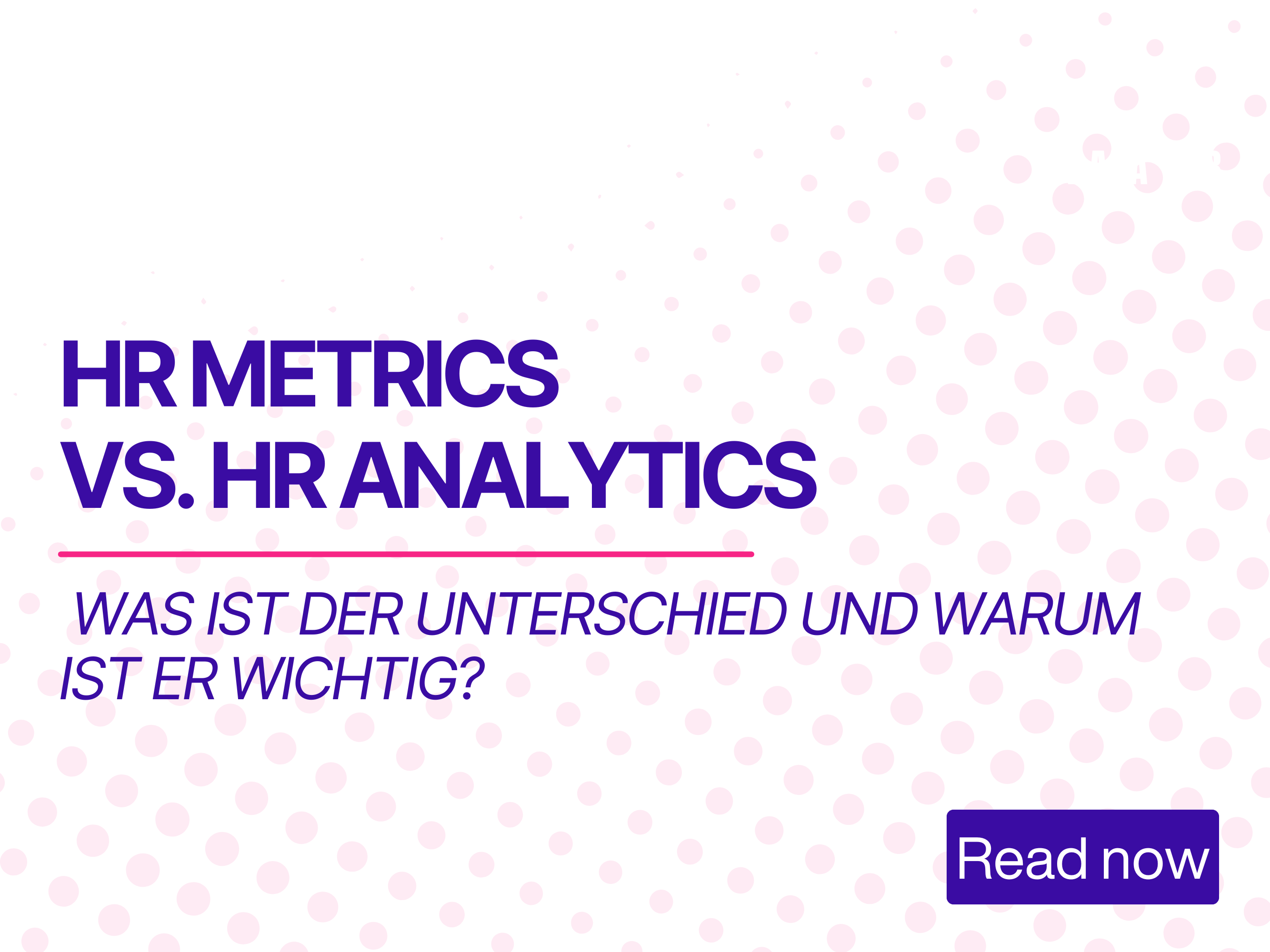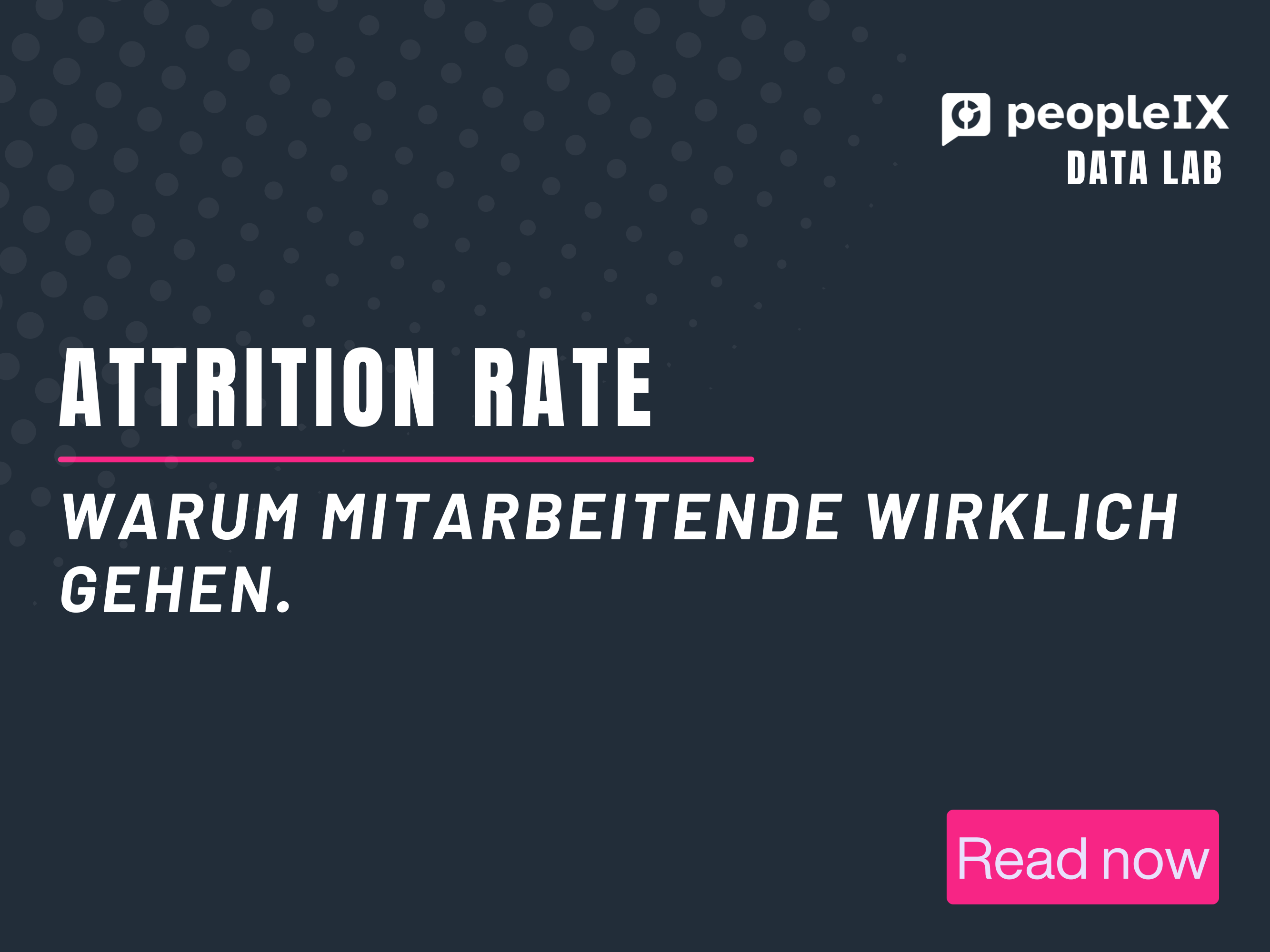In einer zunehmend datengetriebenen HR-Welt stehen People-Teams unter Druck, ihren Beitrag zum Geschäftserfolg klar zu belegen. Begriffe wie HR Metrics und HR Analytics werden dabei oft verwechselt. Doch der Unterschied ist entscheidend – und kann bestimmen, ob HR lediglich berichtet oder echten Business Impact liefert.
Was sind HR Metrics?
HR Metrics sind grundlegende Kennzahlen, die beschreiben, was in der Belegschaft passiert. Sie liefern eine Momentaufnahme, bilden Trends ab und sind die Basis für tiefere Analysen.
Beispiele für HR Metrics:
- Employee Turnover Rate (Fluktuationsrate)
- Abwesenheitsquote
- Time-to-hire
- HR KPIs wie Cost-per-Hire
- Trainingsstunden pro Mitarbeitenden
Sie sind wichtig, um Entwicklungen sichtbar zu machen. Doch: Sie beantworten nicht die Frage warum etwas passiert.
Was ist HR Analytics?
HR Analytics geht weit über Kennzahlen hinaus. Mithilfe von HR Data Analytics werden Ursachen erkannt, Zusammenhänge hergestellt und Entwicklungen prognostiziert. So entstehen echte Handlungsempfehlungen.
Beispiele für HR Analytics:
- Predictive HR Analytics zur Vorhersage von Kündigungsrisiken
- Analyse von HR Performance Metrics, um Leistungstreiber zu identifizieren
- Workforce Analytics, um Headcount und Umsatzplanung abzustimmen
- HR Benchmarking, um die eigene Performance mit dem Markt zu vergleichen
Kurz gesagt: HR Metrics zeigen, was passiert ist. HR Analytics erklärt, warum – und was als Nächstes passiert.
Tools und Trends im HR Analytics
Viele Unternehmen nutzen einfache HR Dashboards oder Tabellen, um Daten darzustellen. Für reines Reporting sind diese hilfreich.
Doch echter Mehrwert entsteht erst mit moderner HR Analytics Software und HR Reporting Tools, die tiefere Analysen und Vorhersagen ermöglichen.
Aktuelle HR Analytics Trends zeigen: Unternehmen bewegen sich von reinen Reports hin zu prädiktiven und strategischen Analysen, die proaktiv Entscheidungen ermöglichen.
Warum der Unterschied zählt
- Von Reporting zu Strategie: Weg von statischen HR KPIs, hin zu Analysen, die die Zukunft gestalten.
- Von reaktiv zu proaktiv: Kündigungen nicht erst feststellen, sondern durch Predictive HR Analytics frühzeitig gegensteuern.
- Von Daten zu Entscheidungen: HR-Daten mit Geschäftskennzahlen wie Umsatzwachstum und Profitabilität verbinden.
Wie peopleIX unterstützt
Mit peopleIX wird aus Reporting echte Entscheidungsgrundlage:
- Alle HR Metrics in einem zentralen HR Dashboard
- Transformation von Daten zu klaren Insights durch Workforce Analytics
- Zusammenarbeit von HR & Finance auf Basis gemeinsamer Fakten
- Vorausschauende Planung mit Predictive HR Analytics
👉 Erfahre mehr über unsere Lösungen:
- HR Analytics Software von peopleIX hier
- Workforce Analytics für bessere Planung hier
- HR Reporting Tools für datengestützte Entscheidungen hier
.webp)




